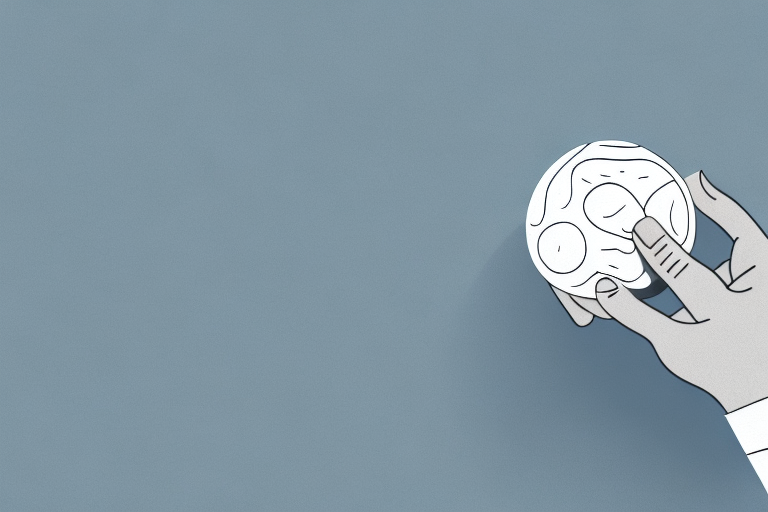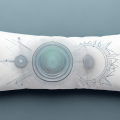If you suffer from muscle pain or tension, you may have heard of trigger points. These are areas of tight, sensitive muscles that can cause discomfort and even refer pain to other parts of the body. Trigger point therapy is a widely-used technique to relieve these symptoms and promote muscle recovery. In this article, we will explore the benefits of using a rubber ball for trigger point therapy, how to properly prepare for a session, techniques for different parts of the body, and more.
What are trigger points and why do they need therapy?
Trigger points are small knots of muscle tissue that can form due to overuse or injury. They can cause pain and stiffness in the affected area, as well as refer pain to other parts of the body. Trigger point therapy aims to relieve these symptoms by applying pressure to the trigger point, releasing the tension and restoring proper muscle function.
Trigger points can also be caused by poor posture, stress, and lack of exercise. They can develop in any muscle group, but are commonly found in the neck, shoulders, and back. If left untreated, trigger points can lead to chronic pain and decreased range of motion.
The benefits of using a rubber ball for trigger point therapy
A rubber ball is an inexpensive and versatile tool for trigger point therapy. One of its main advantages is its size, which allows it to target specific trigger points with precision. Additionally, the ball’s firmness and texture can provide deeper pressure and better traction than fingers or other massage tools. Using a rubber ball for trigger point therapy can also help improve circulation, eliminate toxins, and promote muscle recovery.
Another benefit of using a rubber ball for trigger point therapy is that it can be used anywhere, anytime. Unlike other massage tools, a rubber ball is small and portable, making it easy to carry with you to work, the gym, or while traveling. This means that you can use it to relieve muscle tension and pain whenever you need it, without having to rely on a professional massage therapist or expensive equipment. Additionally, using a rubber ball for trigger point therapy can be a great way to reduce stress and promote relaxation, helping you to feel more calm and centered throughout the day.
Choosing the right rubber ball for trigger point therapy
When choosing a rubber ball for trigger point therapy, it’s important to consider its size, firmness, and texture. A good rule of thumb is to choose a ball that’s about the size of your palm, so it’s easy to grip and control. Firmness-wise, a ball that’s too soft may not provide enough pressure, while one that’s too hard may be too painful for some users. Finally, consider the texture of the ball, as some may have bumps, ridges, or other features that can enhance the massage.
It’s also important to consider the material of the rubber ball. Some people may have allergies or sensitivities to certain materials, so it’s best to choose a ball made from hypoallergenic materials. Additionally, some rubber balls may have a strong odor, which can be unpleasant during use. Look for balls that are labeled as odor-free or have a mild scent.
How to properly prepare for trigger point therapy with a rubber ball
Before starting a trigger point therapy session with a rubber ball, it’s important to warm up the muscles and tissues. This can be done through light exercise, stretching, or even a warm shower or bath. Additionally, make sure to hydrate properly and wear comfortable clothes that allow for free movement. It’s also recommended to start with gentle pressure and gradually increase it as the muscles relax.
Another important aspect to consider when preparing for trigger point therapy with a rubber ball is to identify the specific trigger points that need attention. This can be done through self-examination or with the help of a trained therapist. Once the trigger points have been identified, it’s important to focus on those areas during the therapy session. It’s also recommended to take breaks and stretch in between applying pressure to the trigger points to prevent overworking the muscles.
Techniques for using a rubber ball to relieve trigger points in different areas of the body
Trigger points can occur in many areas of the body, including the neck, shoulders, back, hips, and legs. To use a rubber ball for trigger point therapy, simply place it against the trigger point and apply pressure with your body weight or hands. You can roll the ball around the area or hold it still for a deeper massage. Here are some examples of techniques for different parts of the body:
- Neck: Place the ball at the base of the skull and roll it slowly down to the shoulders, applying pressure to any tender spots.
- Shoulders: Lean against a wall with the ball between your shoulder blade and the wall, and roll it up and down to release tension in the upper back and shoulder area.
- Back: Lie on your back with the ball under your shoulder blade or lower back, and gently rock side to side to massage the muscles.
- Hips: Sit on the ball with one hip and roll it around to release tension in the hip flexors and glutes.
- Legs: Place the ball under the calf muscle and slowly flex and extend the foot to massage the muscle.
Tips for maximizing the effectiveness of your rubber ball trigger point therapy sessions
Here are some tips to get the most out of your trigger point therapy sessions with a rubber ball:
- Stay relaxed and breathe deeply throughout the massage.
- Focus on the trigger points themselves, but also massage the surrounding areas to promote overall muscle relaxation.
- If you feel pain or discomfort, reduce the pressure or stop the massage altogether.
- Drink plenty of water after the massage to help flush out toxins and promote recovery.
How often should you perform rubber ball trigger point therapy?
The frequency of trigger point therapy sessions with a rubber ball will depend on your individual needs and preferences. Some people may benefit from daily sessions, while others may do better with less frequent massages. However, it’s generally recommended to wait at least 24 hours between sessions to allow the muscles to recover.
The possible risks and precautions to take when using a rubber ball for trigger point therapy
While rubber ball trigger point therapy is generally safe and effective, there are some risks and precautions to be aware of. Overuse, improper technique, or excessive pressure can lead to bruising, soreness, or even injury. It’s important to start with gentle pressure and gradually increase it as the muscles relax. Additionally, if you have a medical condition or are pregnant, consult your doctor before starting any new therapy.
Combining other therapies with rubber ball trigger point therapy for better results
Trigger point therapy with a rubber ball can be a powerful tool in your self-care toolkit, but it can also be combined with other therapies for even better results. For instance, stretching, acupuncture, or chiropractic care can help address underlying muscle imbalances and relieve trigger points more effectively. Additionally, incorporating healthy habits such as regular exercise, proper nutrition, and stress management can help prevent trigger points from forming in the first place.
Overall, using a rubber ball for trigger point therapy can be a simple and effective way to relieve muscle tension and promote recovery. By following the techniques and tips outlined in this article, you can enjoy the benefits of this therapy in the comfort of your own home.





